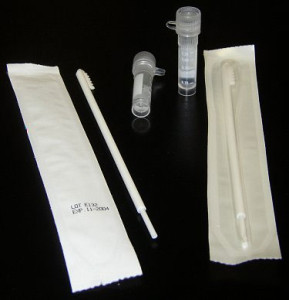For adoptees searching for blood relatives, DNA tests can be powerful tools. I never would have confirmed my biological father’s identity without the benefit of DNA tests.
Yet these tests have limitations.
DNA tests don’t always work to prove Native American ancestry.
I may have a Native American ancestor. My birth mother, Lillian, told her children she had an Indian ancestor and showed the kids how to do what she said was an Indian rain dance.
Whether or not they are true, these tidbits pique my curiosity. Michelle, Lillian’s oldest daughter, thinks our mother looked somewhat Indian.
Just look at those high cheekbones, the dark hair and eyes, Michelle said. Gazing at pictures of Lillian, I see a white woman with high cheekbones, dark hair and eyes. I don’t see a Native American. Lillian’s ancestors came from Ireland.

I identify as the adopted child of two parents whose ancestors came from Poland and Germany and the biological child of two other parents whose ancestors came from Ireland and possibly Scotland.
Only recently did I learn about my biological parents. As an adoptee searching for my biological roots, I took two DNA tests from Family Tree DNA and Ancestry.
According to Family Tree DNA’s Family Finder test, 90 percent of my ancestry comes from the British Isles, with 9 percent from Southeastern Europe. Maybe I inherited only Lillian’s European DNA. Perhaps the Native American ancestor is a myth.
Indian Rumor Lives On in My Birth Mother’s Family
No doubt my birth mother, Lillian, heard the Indian story from someone in her large family. Whether or not they are true, stories like this take on a life of their own. At the Arvin-Armstrong family reunion in southern Indiana, one of my Arvin cousins mentioned the rumor about the Native American ancestor. None of the family genealogists have been able to prove it.
I added to the rumor by sharing a story about one of my blood relatives who is part Indian.
An Oklahoma City native, John and I are related on my maternal side. John’s parents were a mix of Irish, Scottish and Native American, his mother being part Choctaw and his father being part Muskogee. Their respective tribes accepted John’s parents as members. “Both of my parents had Indian roll numbers,” John said. “We all have black hair.”
John popped up as a match on Family Tree DNA’s Family Finder test. The test uses autosomal DNA, which is the blended mixture of genetic material that a person receives in equal amounts from both parents. Each person’s autosomal DNA is unique.
Perhaps my Native ancestry amounts to a few drops from a distant ancestor.
Indeed, that is what Elizabeth Warren discovered when she had her DNA analyzed. Warren retained an expert to dig deeper into her roots and the analysis concluded that she has an Indian ancestor. Warren’s pure Native American ancestor appeared to be “in the range of six to 10 generations ago,” said Carlos D. Bustamante, a Stanford University professor and DNA expert.
Proving Native American Ancestry is Tricky
Parents pass stories down from one generation to the next, leaving relatives to believe they have a Cherokee ancestor in the family. Yet DNA tests don’t always establish the Native American link. Genealogist Amie Bowser Tennant explains why DNA tests don’t reveal Native American ancestry.
As Henry Louis Gates Jr. and genealogist Meaghan E.H. Siekman point out, proving Native American heritage can be complicated. Each tribe is a sovereign nation with its own requirements for accepting members.
If my DNA tests had revealed a little Native American blood, I would have found it interesting, a tidbit that I could share at parties or at the next Arvin-Armstrong family reunion. Having Native ancestry would not change my sense of ethnic or racial identity.
I’d love to hear from adoptees who have discovered their Indian roots. Post comments on my blog!




